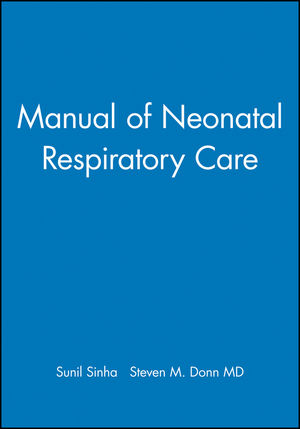Manual of Neonatal Respiratory CareISBN: 978-0-87993-444-6
Paperback
532 pages
March 2003, Wiley-Blackwell
 This is a Print-on-Demand title. It will be printed specifically to fill your order. Please allow an additional 10-15 days delivery time. The book is not returnable.
|
||||||
"This is a complete overview of every aspect of respiratory interventions and assessments. I am very impressed with the chapters and information available of the new state-of-the-art ventilators and the wider ranges of modalities that are extensively covered. This information may help clinicans narrow the options when faced with so many choices and options in ventilaor management. The binding is also convenient and allows the pages to lay flat. The list of abbreviations is complete. Not only is there a detailed table of contents, but index as well.
"I have had 17 years of neonatal experience and I find a great need for a current, updated manual to have as a reference in a Level III NICU. I appreciate involvement that respiratory care practitioners had with the physicians in the development of this manual. These contributors are widely respected and experts in the field."
Doody’s Review Service
"The manual with its large font size, simple line diagrams
and easy to read text makes it a very readable book. It is strongly
recommended for residents, consultants and nurses providing active
neonatal respiratory support."
Indian Paediatrics
"The extent of coverage, easy readability, and superb organization
in conjunction with the plethora of practical pearls make it
worthwhile having access to this book in a bed-side library. For a
price tag of $89.00, it is simply a great bargain."
Journal of Perinatology
"This is a complete book that covers what you need when taking care of critical infants with respiratory disease. It enhances the collaboration of the health care team in the NICU and promotes the team’s efficiency in managing these ill infants. By thoroughly understanding and applying the information in this volume, the survival rate in the NICU may be increased and the complication rate will decrease.
Journal of Pediatric Nursing



